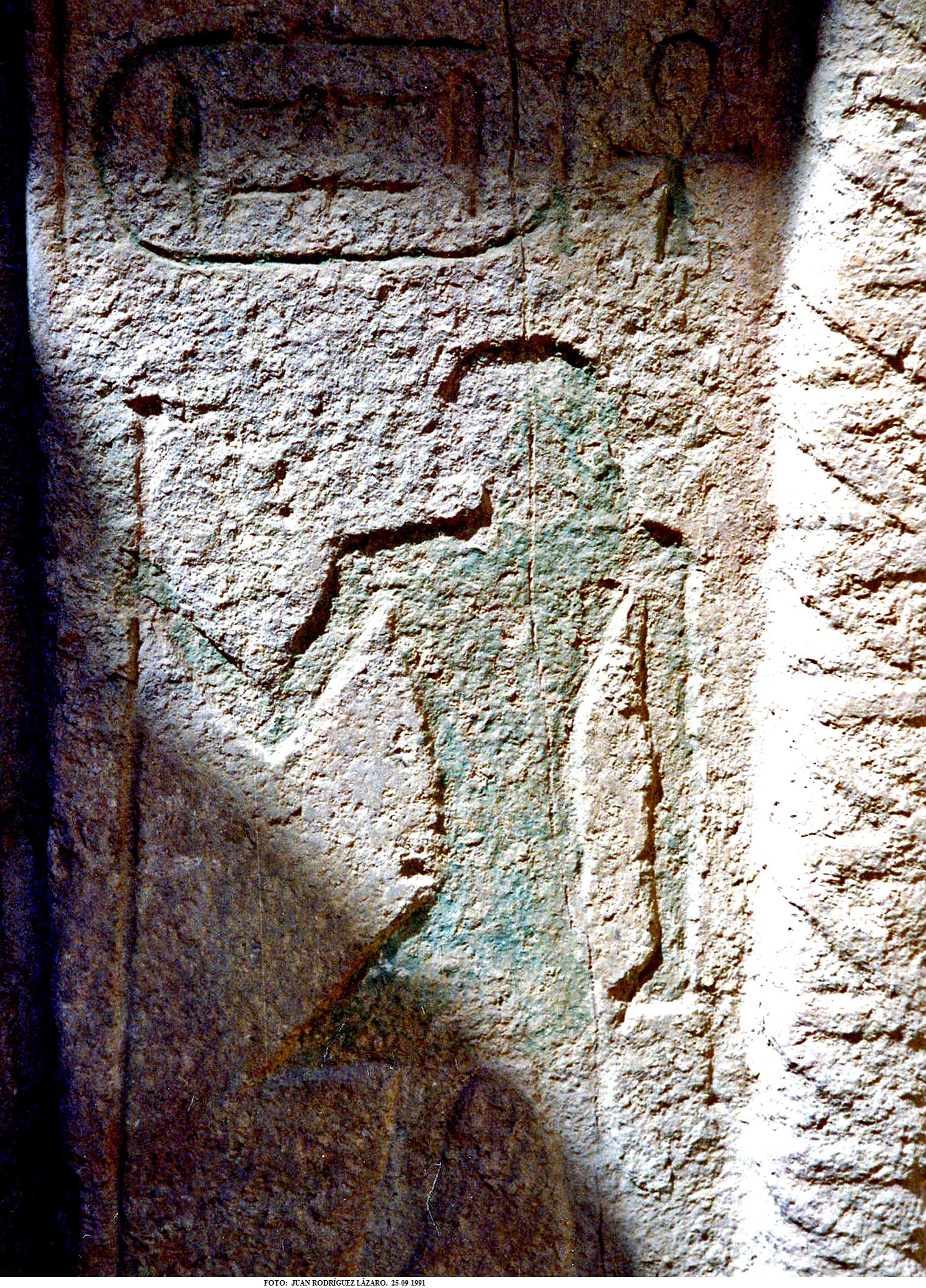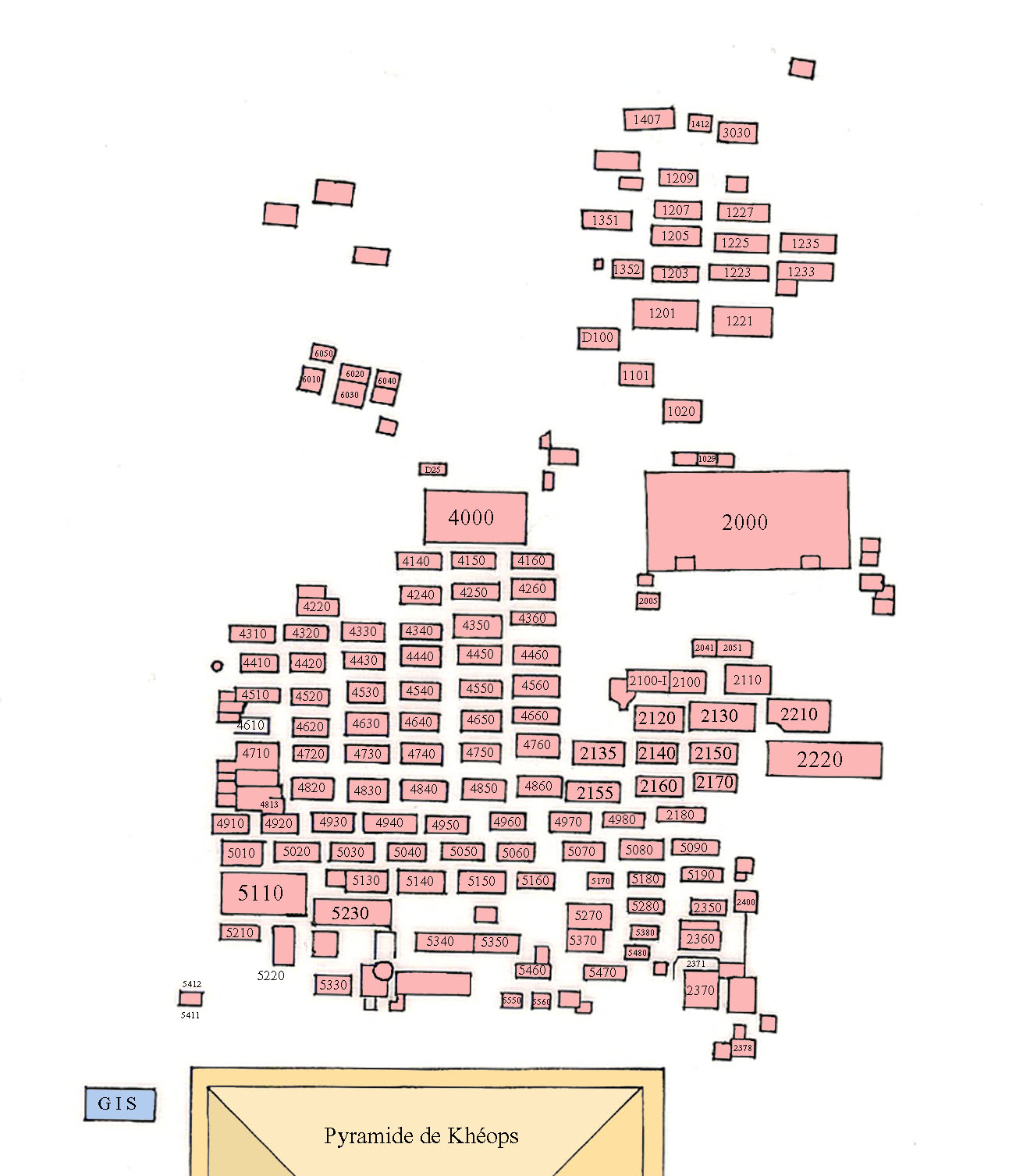|
Senedjemib Mehi
Senedjemib Mehi was a vizier from the Fifth Dynasty of Egypt. Senedjemib Mehi started out his career under Djedkare Isesi and eventually became vizier under Unas. Titles Senedjemib Mehi held many titles, all recorded in his tomb, showing that he made a successful career: * "Pillar of the knmt-folk" * "Favorite of the king" and "favorite of the king wherever he is" * "Overseer of the two workshops" * "Overseer of the two armories" * "Overseer of the two houses of gold" * "Overseer of (all) royal regalia" * "Overseer of scribes of royal records" * "Overseer of royal linen" * "Overseer of the two granaries" * "Overseer of all works of the king" * " Hereditary prince" * "Royal master builder in both houses" (i.e. in Upper and Lower Egypt) * "True count" * "Master of secrets of all commands of the king" * "Royal chamberlain" * "Sole friend" (i.e. of the king) * "Chief justice and vizier” Family Senedjemib Mehi was the son of Senedjemib Inti and Tjefi. Mehi was married to Khentkaus ... [...More Info...] [...Related Items...] OR: [Wikipedia] [Google] [Baidu] |
Senedjemib Inti
Senedjemib Inti was a vizier from the Fifth Dynasty of Egypt during the reign of king Djedkare Isesi. Family Senedjemib Inti was married to a lady named Tjefi. Senedjemib Inti and Tjefi had several children: * Senedjemib Mehi was the eldest son of Inti and Tjefi. Mehi served as vizier, likely under Unas. * Fetekti (?) – The middle of three sons depicted with their parents in a marsh scene was likely called Fetekti. This person may be identical to Kakherptah Feteki (G 5560) who was a judge and administrator, overseer of the Memphite and Letopolite nomes, inspector of wab-priests of the pyramid of Khufu, overseer of new settlements of the pyramid of Isesi, overseer of scribes, great one of the tens of Upper Egypt, pre-eminent of place, director of scribes connected with the moon, and priest of Maat. * Khnumenti, likely second son of Inti and Tjefi. Served under Unas and later in his career Khnumenti served as vizier. * Niankhmin is depicted in Inti's tomb and served as a lector pr ... [...More Info...] [...Related Items...] OR: [Wikipedia] [Google] [Baidu] |
Giza
Giza (; sometimes spelled ''Gizah'' arz, الجيزة ' ) is the second-largest city in Egypt after Cairo and fourth-largest city in Africa after Kinshasa, Lagos and Cairo. It is the capital of Giza Governorate with a total population of 9.2 million as of 2021. It is located on the west bank of the Nile, southwest of central Cairo, and is a part of the Greater Cairo metropolis. Giza lies less than north of Memphis (''Men-nefer''), which was the capital city of the first unified Egyptian state from the days of the first pharaoh, Narmer. Giza is most famous as the location of the Giza Plateau, the site of some of the most impressive ancient monuments in the world, including a complex of ancient Egyptian royal mortuary and sacred structures, including the Great Sphinx, the Great Pyramid of Giza, and a number of other large pyramids and temples. Giza has always been a focal point in Egypt's history due to its location close to Memphis, the ancient pharaonic capital of the ... [...More Info...] [...Related Items...] OR: [Wikipedia] [Google] [Baidu] |
Vizier (Ancient Egypt)
The vizier () was the highest official in ancient Egypt to serve the pharaoh (king) during the Old, Middle, and New Kingdoms. Vizier is the generally accepted rendering of ancient Egyptian , etc., among Egyptologists. The ''Instruction of Rekhmire'' (''Installation of the Vizier''), a New Kingdom text, defines many of the duties of the , and lays down codes of behavior. The viziers were often appointed by the pharaoh. During the 4th Dynasty and early 5th Dynasty, viziers were exclusively drawn from the royal family; from the period around the reign of Neferirkare Kakai onwards, they were chosen according to loyalty and talent or inherited the position from their fathers. Responsibilities The viziers were appointed by the pharaohs and often belonged to a pharaoh's family. The vizier's paramount duty was to supervise the running of the country, much like a prime minister. At times this included small details such as sampling the city's water supply. All other lesser supervisor ... [...More Info...] [...Related Items...] OR: [Wikipedia] [Google] [Baidu] |
Fifth Dynasty Of Egypt
The Fifth Dynasty of ancient Egypt (notated Dynasty V) is often combined with Dynasties III, IV and VI under the group title the Old Kingdom. The Fifth Dynasty pharaohs reigned for approximately 150 years, from the early 25th century BC until the mid 24th century BC. Chronology The Fifth Dynasty of Egypt is a group of nine kings ruling Egypt for approximately 150 years in the 25th and 24th centuries BC. The relative succession of kings is not entirely secured as there are contradictions between historical sources and archaeological evidence regarding the reign of the shadowy Shepseskare. Rulers Known rulers in the Fifth Dynasty are listed below. Manetho assigns 248 years of rule to the Fifth Dynasty; however, the pharaohs of this dynasty more probably ruled for approximately 150 years. This estimate varies by both scholar and source. The Horus names and most names of the queens are taken from Dodson and Hilton. Manetho writes that the Dynasty V kings ruled from Elep ... [...More Info...] [...Related Items...] OR: [Wikipedia] [Google] [Baidu] |
Djedkare Isesi
Djedkare Isesi (known in Ancient Greek, Greek as Tancheres) was a pharaoh, the eighth and penultimate ruler of the Fifth Dynasty of Egypt in the late 25th century BC, 25th century to mid-24th century BC, during the Old Kingdom of Egypt, Old Kingdom. Djedkare succeeded Menkauhor Kaiu and was in turn succeeded by Unas. His relationship to both of these pharaohs remain uncertain, although it is often conjectured that Unas was Djedkare's son, owing to the smooth transition between the two. Djedkare likely enjoyed a reign of more than 40 years, which heralded a new period in the history of the Old Kingdom. Breaking with a tradition followed by his predecessors since the time of Userkaf, Djedkare did not build a temple to the sun god Ra, possibly reflecting the rise of Osiris in the ancient Egyptian religion, Egyptian pantheon. More significantly, Djedkare effected comprehensive reforms of the Egyptian state administration, the first undertaken since the inception of the system of rank ... [...More Info...] [...Related Items...] OR: [Wikipedia] [Google] [Baidu] |
Unas
Unas or Wenis, also spelled Unis ( egy, wnjs, hellenized form Oenas or Onnos), was a pharaoh, the ninth and last ruler of the Fifth Dynasty of Egypt during the Old Kingdom. Unas reigned for 15 to 30 years in the mid-24th century BC (circa 2345–2315 BC), succeeding Djedkare Isesi, who might have been his father. Little is known of Unas' activities during his reign, which was a time of economic decline. Egypt maintained trade relations with the Levantine coast and Nubia, and military action may have taken place in southern Canaan. The growth and decentralization of the administration in conjunction with the lessening of the king's power continued under Unas, ultimately contributing to the collapse of the Old Kingdom some 200 years later. Unas built a pyramid in Saqqara, the smallest of the royal pyramids completed during the Old Kingdom. The accompanying mortuary complex with its high and valley temples linked by a causeway was lavishly decorated with painted reliefs, whos ... [...More Info...] [...Related Items...] OR: [Wikipedia] [Google] [Baidu] |
Iry-pat
Iry-pat ( egy, jrj-pꜥt "member of the elite") was an ancient Egyptian ranking title, that is a title announcing a high position in the hierarchy of the country. Iry-pat was indeed the highest ranking title at the royal court, and only the most important officials could bear this title. The title is already attested in the First Dynasty: one of the first holders was Merka,Toby Wilkinson: ''Early Dynastic Egypt'', London, New York , p. 148 official under king Qa'a. In the New Kingdom, the title was often the crown prince and the title announced that the holder was the second ruler in the country. It is therefore sometimes translated as ''Hereditary'' or ''Crown Prince''. Under Tutankhamun, Horemheb Horemheb, also spelled Horemhab or Haremhab ( egy, ḥr-m-ḥb, meaning "Horus is in Jubilation") was the last pharaoh of the 18th Dynasty of Egypt (1550–1295 BC). He ruled for at least 14 years between 1319 BC and 1292 BC. ... was officially designated th ... [...More Info...] [...Related Items...] OR: [Wikipedia] [Google] [Baidu] |
Giza West Field
The West Field is located on the Giza Plateau, to the west of the Great Pyramid of Giza. It is divided up into smaller areas like the cemeteries known as the Abu Bakr Excavations (1949–50, 1950–51, 1952 and 1953), as well as several cemeteries whose toponyms are based on the mastaba numbers such as Cemetery G 1000 and Cemetery G 1100. The West Field contains Cemetery G1000 – Cemetery G1600, and Cemetery G 1900. Further cemeteries in this field are: Cemeteries G 2000, G 2200, G 2500, G 3000, G 4000, and G 6000. Three other cemeteries are named after their excavators: Junker Cemetery West, Junker Cemetery East and Steindorff Cemetery. Porter, Bertha and Moss, Rosalind L. B., ''Topographical Bibliography of Ancient Egyptian Hieroglyphic Texts, Reliefs, and Paintings. Volume III. Memphis. Part I. Abû Rawâsh to Abûṣîr.'' 2nd edition, revised and augmented by Jaromír Málek, The Clarendon Press, Oxford 1974PDF from The Giza Archives, 29,5 MBRetrieved February 5, 2017. Ceme ... [...More Info...] [...Related Items...] OR: [Wikipedia] [Google] [Baidu] |
Museum Of Fine Arts, Boston
The Museum of Fine Arts (often abbreviated as MFA Boston or MFA) is an art museum in Boston, Massachusetts. It is the 20th-largest art museum in the world, measured by public gallery area. It contains 8,161 paintings and more than 450,000 works of art, making it one of the most comprehensive collections in the Americas. With more than 1.2 million visitors a year, it is the 52nd–most visited art museum in the world . Founded in 1870 in Copley Square, the museum moved to its current Fenway location in 1909. It is affiliated with the School of the Museum of Fine Arts at Tufts. History 1870–1907 The Museum of Fine Arts was founded in 1870 and was initially located on the top floor of the Boston Athenaeum. Most of its initial collection came from the Athenæum's Art Gallery. Francis Davis Millet, a local artist, was instrumental in starting the art school affiliated with the museum, and in appointing Emil Otto Grundmann as its first director. In 1876, the museum moved t ... [...More Info...] [...Related Items...] OR: [Wikipedia] [Google] [Baidu] |


_-_046_(cropped).jpg)

_032007_27_det.jpg)


